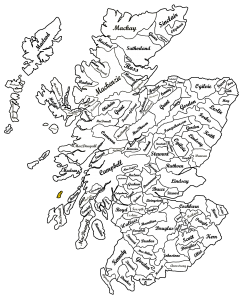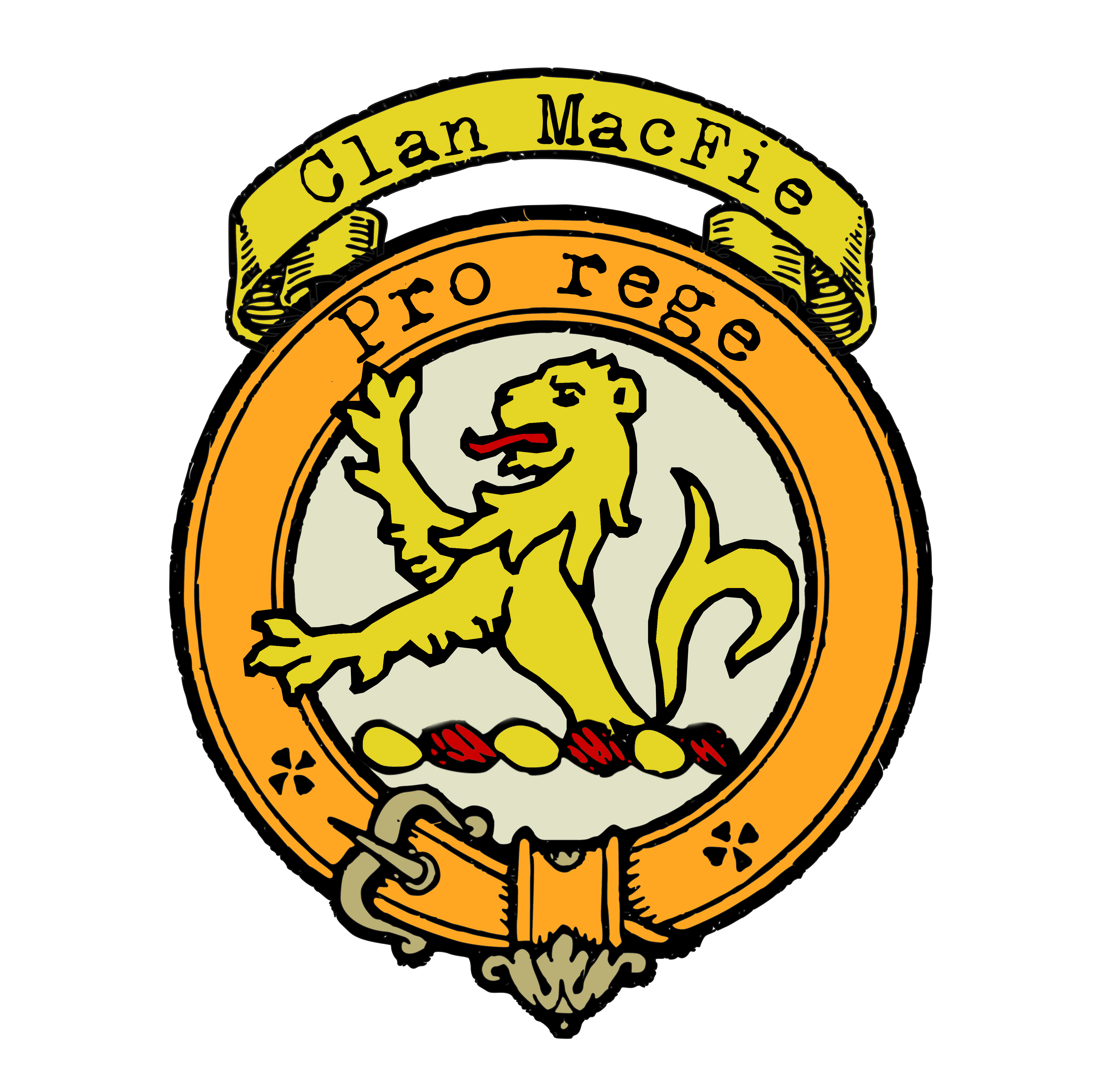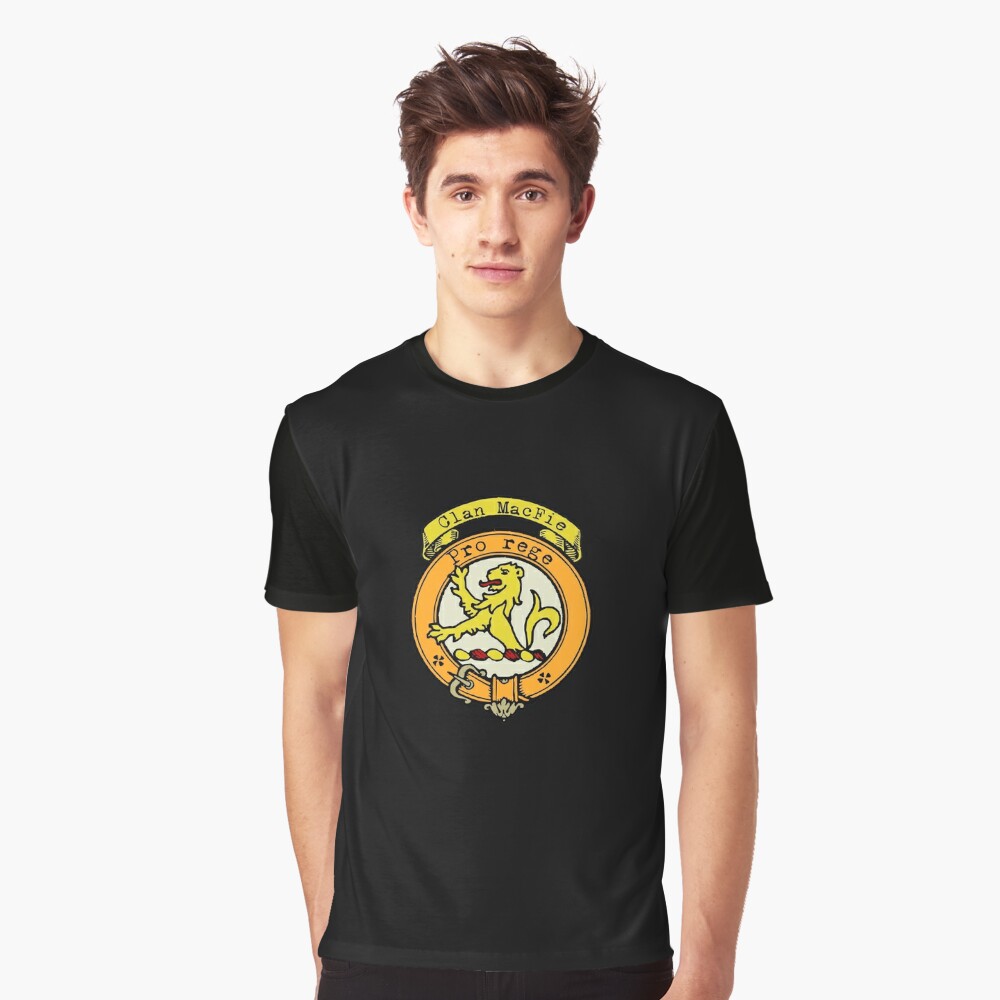Clan MacFie
|
|
CREST: A demi lion rampant Sable charged with a pheon point downwards Or MOTTO: Pro rege TRANSLATION: For the king VARIATIONS: McFie, MacPhee, McPhee |
 The name “MacFie” or “Macphee” is believed to have Gaelic origins and is derived from “MacDhuibhshith,” meaning “son of the dark fairy.” The exact origin of the name is shrouded in mystery, lost in the mists of time. Nonetheless, the name MacFie has endured through the ages, capturing the imagination with its mythical associations and intriguing heritage. The name “MacFie” or “Macphee” is believed to have Gaelic origins and is derived from “MacDhuibhshith,” meaning “son of the dark fairy.” The exact origin of the name is shrouded in mystery, lost in the mists of time. Nonetheless, the name MacFie has endured through the ages, capturing the imagination with its mythical associations and intriguing heritage.
One enchanting tradition surrounding the MacFie clan is the belief that their ancestry can be traced back to a seal-woman who was unable to return to the sea. This captivating tale has been passed down through generations, contributing to the clan’s aura of mysticism and connection to the natural world. Historical records indicate that in 1164, a MacFie named Duibhshith held the esteemed position of “ferleighinn” or “reader” at Iona during the reign of King Malcolm IV. This affiliation with Iona, a significant religious center, underscores the clan’s connection to the spiritual and intellectual aspects of Scottish culture. The Macphees of Colonsay played a crucial role in preserving the records of Man and the Isles. Although little is known about these records, it is speculated that they may have been kept at Tynwald, the historic seat of the Manx Parliament. This association further emphasizes the MacFie clan’s involvement in the cultural heritage of the region. The MacFies remained steadfast in their loyalty to the Macdonalds, even after the Hebrides were ceded to Scotland in 1494. Tradition holds that a Macphee chief fought alongside the Lord of the Isles and emerged victorious against Sir Gile de Argentine at the Battle of Bannockburn in 1314. Their unwavering support for their allies, even in times of conflict, speaks volumes about the clan’s strong sense of identity and commitment. Tragedy struck the MacFie clan in the early 17th century when Malcolm Macphee of Colonsay joined a rebellion against the Earl of Argyll. The conspirators, including Macphee, were betrayed and forced to sign the Statutes of Iona, relinquishing their ancient Lordship of the Isles. This marked a turning point for the clan, leading to their dispossessions and subsequent migrations to find refuge in Lochaber on the Scottish mainland. Despite the hardships faced by the clan, the Macphees carried their legacy forward. Many Macphees are believed to have fought alongside Cameron of Lochiel at the ill-fated Battle of Culloden in 1746. The MacFies’ resilience and unwavering spirit in the face of adversity serve as a testament to their enduring legacy. |
|
Citations:
|
|

Purchase @ Redbubble
Purchase @ Amazon.com
Purchase @ Amazon.co.uk

